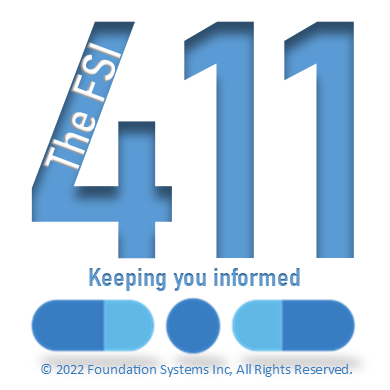Inventory seems to be the backbone of any pharmacy, retail, or closed door. Over the years, sadly I have seen too many pharmacies close their doors because of mismanaged or unmanaged inventory. If you are just opening your doors, don’t wait to start managing inventory. If your pharmacy once thrived and you are now struggling, or maybe you have struggled from the beginning, start managing your inventory. This doesn’t mean signing for your order and putting it in its place on the shelf. Know what you have, how long you have it, what meds are moving, and what meds are sitting. Sitting meds are costing you money! FSI has some great options to track inventory and manage a perpetual inventory every minute your doors are open. Another item to discuss: price updates, which are directly related to your inventory for accurate reporting.
I once knew a pharmacy owner of a very busy pharmacy, they averaged about 800 prescriptions per day. This pharmacy owner was also a pharmacist, he put in his time, and along the way, he built his customer base. Along with building his customer base, he found the best way for his business to thrive was to manage his inventory. This pharmacy owner/RPh could tell you the average time a drug sat on his shelf once received from the wholesaler. OCD? A bit… However, all of this came from using his FSI software to the fullest extent, processing orders, price updates, running reports, and returning meds his pharmacy would otherwise have sitting on the shelf (overstock/overhead). That’s running a tight ship! What I have seen is no matter your daily average prescription count, managing your inventory is possible if you use the tools you have at your disposal.
For years, FSI has offered the ability to manage a drug’s minimum re-order point, add drugs to your order based on the minimum reorder point, and before you send the order, edit the order. Once the order is placed, you get a confirmation back from your wholesaler, an electronic response updating your stock on hand, and acquisition cost. Along with this, you can automatically update all of your drug acquisition costs daily. The next process is checking with your wholesaler to see what your deadline is for returning overstock inventory. If you aren’t already doing this, you need to start!
Returns normally apply to your wholesaler account as a credit for future orders. This is money you have already spent, and now get to re-spend to purchase useful inventory and don’t have to spend more to buy something you might have already had sitting on the shelf. Some pharmacies have never done this, then one day someone gets a wild hare after realizing their inventory is a mess. Upon going through bottle after bottle on the shelves and finding drugs that have been on the shelf for months, yet more keep getting ordered. Now there is a surplus and something needs to be done. Taking full advantage of FSI’s inventory reporting capabilities, a report is generated to help find the many unused or overstocked drugs sitting on the shelves(this only worked because the pharmacy was already doing perpetual inventory and ordering). Looking into this further, the pharmacy staff member holding the wild hare decides to see if their wholesaler will take some of these unexpired, overstock meds back, and potentially get credit on their account. You might find some of your meds are expired or you have had them beyond what your wholesaler will accept on a return for credit. Everything that can be sent back is sent back, credit is applied to your wholesaler account, and the pharmacy manager and/or owner praise the wild hare pharmacy staff member with a nice thank you bonus! If only, the bonus anyway. The inventory part of this is real.
The ability to easily send inventory back to your wholesaler for credit is really based on how well you manage your stock on hand. If you have no idea where your SOH is, some of your inventory may expire before you process your return. Check with your wholesaler too, they might have a length of time an item can be returned for free, after that a restocking fee may apply.
Inventory best practices checklist:
-Clear SOH and deactivate all drugs in your software
-Update SOH and activate only drugs you have on your shelf, current inventory
-Maintain active and inactive daily for better inventory management
-Perpetual inventory configuration
-Minimum reorder points
-Primary and secondary wholesaler configuration
-Daily wholesale ordering, checking the order, and confirmation acceptance
-Daily automated price updates
-Receiving the order and checking the order daily
-Reporting unopened overstock inventory on the shelf
-Return the unopened overstock inventory to your wholesaler
-Reap the benefits!
Your customer base is important, but if your overhead outweighs your bottom line, your pharmacy is a sinking ship. You have tools for customer growth and retention. You also have tools for efficient inventory management. Without your customer, you don’t need inventory. Once you have inventory, keep track of it and do everything you can to make sure it’s used to serve your customer, not bring your pharmacy down.
“A company that is growing its earnings or reducing its costs is said to be improving its bottom line. Most companies aim to improve their bottom lines through two simultaneous methods: increasing revenues(i.e., generate top line growth) and improving efficiency (or cutting costs).”
-Alicia Tuovila, Investopedia



Foundation Systems, Inc (801) 785-7720
support@fsi.us.com – help.fsi.us.com – training.fsi.us.com



very good info, appreciate it. I am interested. I will talked to you guys and figure it out for my store.
Thanks!